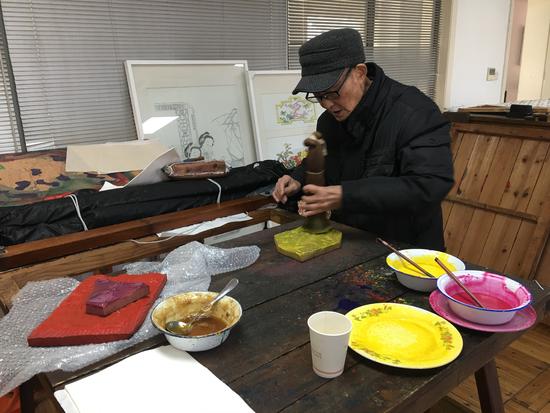
Fang Zhida works in his studio on Jan 24, 2017. (Photo/Xinhua)
Spring Festival is supposed to be a joyous occasion, but it has left Fang Zhida, 83, anxious.
Days before the new year, he locks himself in his studio to focus on an ancient folk art.
Taohuawu woodcut new year prints, or "nianhua", are a type of traditional painting that people put on their doors to ward off devils, and express good wishes for Chinese New Year.
But in recent years business has been poor, leaving Fang worried that his beloved craft may eventually die out.
As the name suggests, the craft was born on Taohuawu street in Suzhou city, eastern China's Jiangsu Province.
A craftsman usually draws a sketch on a piece of paper before carving it on to a set of boards, and then paints it in different shades of color. The craftsman presses the boards on to a piece of paper, and the print is complete.
The art has a history of more than 350 years. In 2006, it was added to China's intangible cultural heritage list.
Fang started to learn at the age of 14, and describes the art as the love of his life.
"For better or for worse, I have been doing it for all my life," he says.
INHERIT AND INNOVATE
Fang has been doing all he can to pass down this intangible cultural heritage.
He has been teaching the art by hand at the Taohuawu Woodcut New Year Print Society since 2004. Four students are chosen every two years, with 28 students graduating so far.
"It is important that we introduce the art to the young and pass it down," he says.
From painting to woodcutting and printing, it can take as little as a week or as long as a year to finish a single piece.
"Printing it one piece after another all day long can be a tiring thing," he says. "So, you must be really interested in it, be hard-working, and you need to handle loneliness very well."


















































